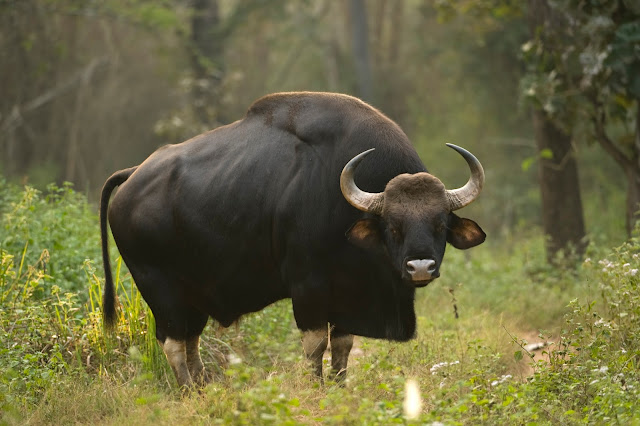Fox with Wings - Indian Flying Fox
We all know about a little fox wondering in forest, which is quit look like our home dog,
But no one see ever a fox flying in a sky......
So, I turn our journey to see a fox flying in a sky...
I am talking about "World's Largest Bat- Indian Flying Fox".
Introduction Part
- The Indian Flying Fox also known as the greater Indian Fruit Bat , is a species of flying fox in the family Pteropodidae.
- It is noctumal and feeds mainly on ripe, fruits.
Physical Characteristics
- The Indian Flying fox may be the world's largest Bat.
- The physical appearance of this species is similar to that of megachiropterans in general with large eyes, simple ears and no facial ornamentation.
- Dark brown , gray or black body colour with a contrasting yellowish mantle is typical of the genus Pteropus.
- Body mass ranges from 600 to 1600 gm and males are generally larger than females.
- Wingspan may range from 1.2 to 1.5 m and body length averages 23 cm.
- Members of the genus Pteropus maintain body temperatures between 33 to 37 degree Celsius, but must do this through constant activity.
Distribution and Habitat
- The Indian Flying Fox lives in a tropical forests and swamps, near bodies of water.
- They also live on coastal islands, and it is theorized that ancestors migrated here long ago and found a liking to it , or were blown there and quickly forged a lifestyle.
- It is found in India, Pakistan, Sri-Lanka, Tibet, Bangladesh, Maldives and Nepal.
Feeding
- The Indian Flying fox is frugivorous or nectarivorous i.e., they eat fruits or lick nectar from flowers.
- At dusk, these bats forage for ripe fruit.
- While ingesting fruit, these bats expel waste that pollinates and disperse seeds.
Reproduction
- Mating season : Pteropus giganteus is a polygynandrous species, and breeds yearly from July to October.
- Births occur from February to May. Gestation period is typically 140 to 150 days.
- The average number of birth is 1 to 2 pups. Among members of the genus Pteropus, pups are carried by the mother for the first few weeks of life, with weaning occurring around 5 months of age.
- Males do not participate in parental care.
- Young bats learn to fly at approximately 11 weeks of age.
- Reproductive maturity occurs at 1.5 years.
Disease transmission
- Like other fruit bats, the Indian flying fox may be a natural reservoir for a number of diseases including members of groups Henipavirus and Coronavirus.
- These can prove fatal to humans and domestic animals.
- Fruit bats are considered a delicacy by South Pacific Islanders as well as in Micronesia where, on the Island of Guam, consumption has been suggested as a possible cause of Lytico-Bodig disease.





Comments
Post a Comment